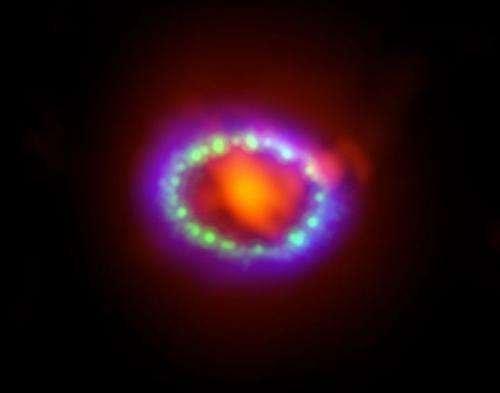June 18, 2019 report
Closer look at supernova dust suggests there's more of it than previously assumed

A pair of researchers with the Max Planck Institute for Chemistry dust from a supernova have found evidence that suggests it is more abundant than thought. In their paper published in the journal Nature Astronomy, Jan Leitner and Peter Hoppe describe their use of new technology to examine grains of supernova dust and what they found.
Scientists have known for some time that dust emitted by stars makes its way to our solar system. They have also known that some of that dust comes from supernovas. In this new effort, the researchers claim that they have found evidence that more of the interstellar dust that makes it to Earth comes from supernovas than previously thought.
The researchers suggest that the reason less star dust was attributed to supernovas was because researchers lacked the tools to properly examine the grains of dust. They further report that the development of a Cameca NanoSIMS 50 ion probe allowed them to measure such dust in better detail. Their measurement process also included the use of an ion mass spectrometer capable of measuring isotopes with high spatial resolution. By using the new technology, the researchers determined how much of the dust came from regular stars churning away, and how much came from supernovas (less than 1 percent). The percentage that originated from supernovas was higher than expected—this suggests that more of the star dust that makes it to Earth has a supernova origin. And that suggests that more of the star dust in space originated in supernovae than has been thought.
The dust studied by the researchers was obtained from chondrite samples found in Northwest Africa. Close study via the new technology allowed the researchers to measure the amount of magnesium they contained, which they also note predates our own star. They point out that most of the material in our solar system was created from material ejected from stars; thus, a better understanding of stardust could lead to a better understanding of how we got here.
More information: Jan Leitner et al. A new population of dust from stellar explosions among meteoritic stardust, Nature Astronomy (2019). DOI: 10.1038/s41550-019-0788-x
Journal information: Nature Astronomy
© 2019 Science X Network




















